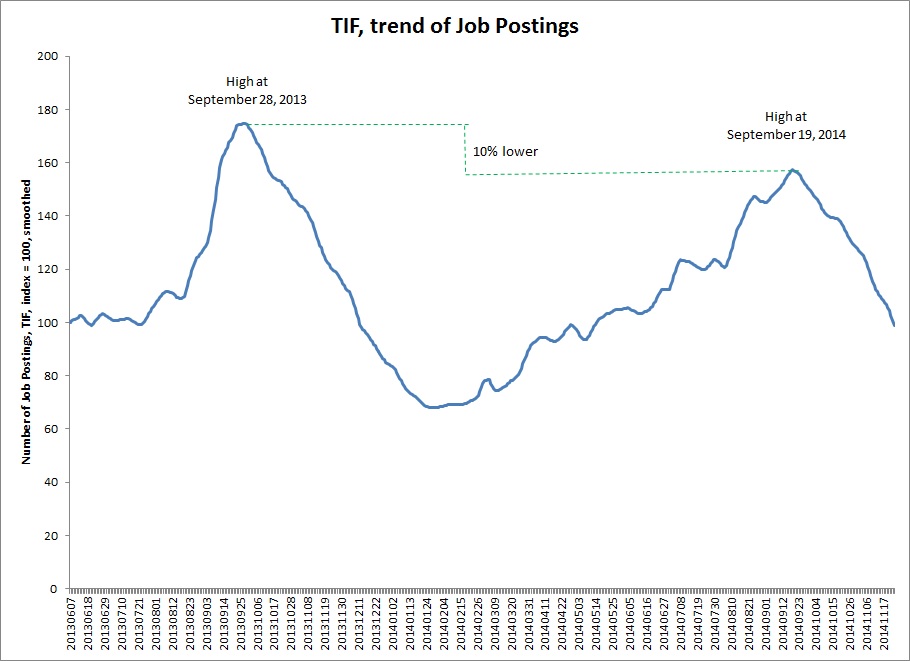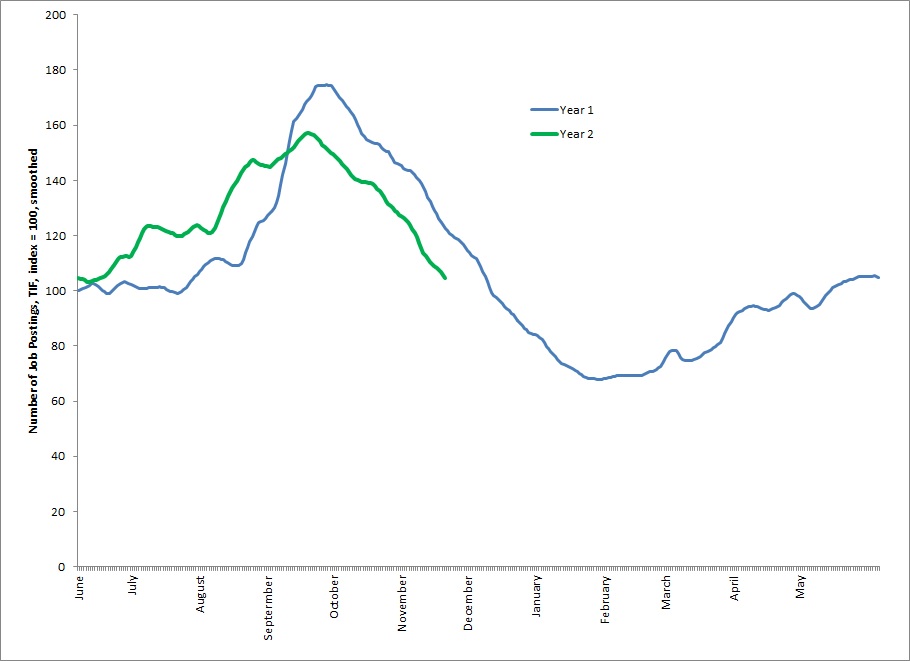TIF (Tiffany & Co.) fell 14% today due to poor Holiday Season results ….. ZettaCap highlighted the likelihood of poor results over a month ago in our report TIF’s Troubling Job Postings (Research_20141204_Job Postings_TIF) ….. “With Tiffany & Co. publishing fewer Job Postings, it does not appear that management is preparing for an overly strong last quarter, which for a luxury retail company could have fairly negative repercussions for the stock.”
This is a significant win for the use of alternative data for financial market analysis. Many in the markets are intrigued by using alternative data for investing, but want more proof of its usefulness. I really like the Tiffany example due to the very intuitive nature of the analysis and due to the clean underlying data.
TIF is a luxury retail company. It depends, like most retail companies, on a strong end of year. In other words, December is very important as it contains many gift giving celebrations including Christmas and Hanukkah. Without a strong December, companies could get thrashed by the stock market.
This is exactly what happened to TIF today. The company came out with an apparent “surprise” that the Holiday Season was not so great as summarized in this Bloomberg article, Tiffany Shares Tumble After Jeweler Cuts Annual Forecast: “Tiffany & Co. shares fell the most in more than 10 years after a sluggish holiday season spurred the luxury jewelry chain to cut its annual forecast.”
Apparently, investors, including traders and analysts, were caught off-guard by the announcement as the stock plunged rapidly. Analysts called the figures “unexpected” and the company’s CEO called them “disappointing”.
But the real question is should the market have known beforehand? We believe that it should have known or at least been much better informed, as a 14% decline implies a complete shock and knee-jerk reaction to the maximum extent for such a well known company.
The company’s Job Postings had been in decline for months prior to the announcement, and more importantly appeared very weak in comparison to the previous year. This trend was fairly obvious and one easily identified.
Job Postings, as compared to that of 2013, peaked over a week earlier and about 10% lower. Most people looking at such a graph would stop and think twice about recommending such a stock.
When you superimpose the annual trends, the most recent Holiday Season appears very weak. “Year 2” includes the run-up to the 2014 Holiday Season. It shows consistent weakness in comparison to the previous year after their respective peaks.
Frankly, you do not need quant experience or a MBA to understand the implied message from management — we are looking to hirer fewer people this year because we are not that confident concerning the growth outlook.
If this is your take, then you have to assume that management had a negative outlook on its market / demand for a number of months and that the weak revenue was not really a surprise to them. In short, if they were gearing up for a banner Holiday Season they most likely would have been publishing Job Postings well above their trend last year. In reality, management approved below trend Job Postings, providing rather clear signals to analysts willing to analyze the data.
Our report published, over a month ahead of an announcement that completely shocked the market, is a significant example of the usefulness of Job Postings for financial market analysis.

